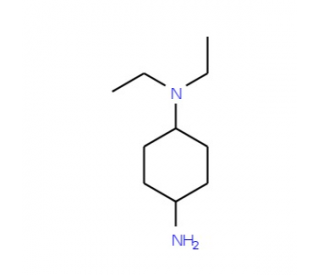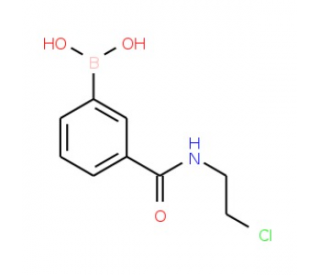详细说明
Species Reactivity
Mouse
Specificity
Detects mouse LYVE-1 in direct ELISAs and Western blots. In direct ELISAs and Western blots, no cross-reactivity with recombinant mouse CD44 or recombinant human LYVE-1 is observed.
Source
Monoclonal Rat IgG 2A Clone # 223322
Purification
Protein A or G purified from hybridoma culture supernatant
Immunogen
BaF/3 mouse pro-B cell line transfected with mouse LYVE-1
Ala24-Thr234
Accession # Q8BHC0Formulation
Lyophilized from a 0.2 μm filtered solution in PBS with Trehalose. *Small pack size (SP) is supplied as a 0.2 µm filtered solution in PBS.
Endotoxin Level
<0.10 EU per 1 μg of the antibody by the LAL method.
Label
Unconjugated
Applications
Recommended
ConcentrationSample
Western Blot
2 µg/mL
See below
Flow Cytometry
0.25 µg/10 6 cells
See below
Blockade of Receptor-ligand Interaction
In a functional ELISA, 0.02-0.1 µg/mL of this antibody will block 50% of the binding of 1 μg/mL of biotinylated Hyaluronan to immobilized Recombinant Mouse LYVE-1 (Catalog # ) coated at 5 µg/mL (100 µL/well). At 1 μg/mL, this antibody will block >90% of the binding.
CyTOF-ready
Ready to be labeled using established conjugation methods. No BSA or other carrier proteins that could interfere with conjugation.
Immunocytochemistry
8-25 µg/mL
Immersion fixed LYVE-1 transfected cells
Please Note: Optimal dilutions should be determined by each laboratory for each application. are available in the Technical Information section on our website.
Data Examples
Western Blot | Detection of Mouse LYVE‑1 by Western Blot. Western blot shows lysate of bEnd.3 mouse endothelioma cell line. PVDF membrane was probed with 2 µg/mL of Rat Anti-Mouse LYVE‑1 Monoclonal Antibody (Catalog # MAB2125) followed by HRP-conjugated Anti-Rat IgG Secondary Antibody (Catalog # ). A specific band was detected for LYVE‑1 at approximately 65 kDa (as indicated). This experiment was conducted under non-reducing conditions and using . |
Flow Cytometry | Detection of LYVE‑1 in bEnd.3 Mouse Cell Line by Flow Cytometry. bEnd.3 mouse endothelioma cell line was stained with Rat Anti-Mouse LYVE‑1 Monoclonal Antibody (Catalog # MAB2125, filled histogram) or isotype control antibody (Catalog # , open histogram), followed by Phycoerythrin-conjugated Anti-Rat IgG Secondary Antibody (Catalog # ). |
Preparation and Storage
Reconstitution
Reconstitute at 0.5 mg/mL in sterile PBS.
Shipping
The product is shipped at ambient temperature. Upon receipt, store it immediately at the temperature recommended below. *Small pack size (SP) is shipped with polar packs. Upon receipt, store it immediately at -20 to -70 °C
Stability & Storage
Use a manual defrost freezer and avoid repeated freeze-thaw cycles.
12 months from date of receipt, -20 to -70 °C as supplied.
1 month, 2 to 8 °C under sterile conditions after reconstitution.
6 months, -20 to -70 °C under sterile conditions after reconstitution.
Background: LYVE-1
Lymphatic vessel endothelial hyaluronan (HA) receptor-1 (LYVE-1) is a recently identified receptor of HA, a linear high molecular weight polymer composed of alternating units of D-glucuronic acid and N-acetyl-D-glucosamine. HA is found in the extracellular matrix of most animal tissues and in body fluids. It modulates cell behavior and functions during tissue remodeling, development, homeostasis, and disease (1). The turnover of HA (several grams/day in humans) occurs primarily in the lymphatics and liver, the two major clearance systems that catabolize approximately 85% and 15% of HA, respectively (1-3). LYVE-1 shares 41% homology with the other known HA receptor, CD44 (4). The homology between the two proteins increases to 61% within the HA binding domain. The HA binding domain, known as the link module, is a common structural motif found in other HA binding proteins such as link protein, aggrecan and versican (1, 5). Human and mouse LYVE-1 share 69% amino acid sequence identity.
LYVE-1 is primarily expressed on both the luminal and abluminal surfaces of lymphatic vessels (4, 5). In addition, LYVE-1 is also present in normal hepatic blood sinusoidal endothelial cells (6). LYVE-1 mediates the endocytosis of HA and may transport HA from tissue to lymph by transcytosis, delivering HA to lymphatic capillaries for removal and degradation in the regional lymph nodes (5, 7, 8). Because of its restricted expression patterns, LYVE-1, along with other lymphatic proteins such as VEGF R3, podoplanin and the homeobox protein propero-related (Prox-1), constitute a set of markers useful for distinguishing between lymphatic and blood microvasculature (4, 5, 9-11).
References:
Knudson, C.B. and W. Knudson (1993) FASEB J. 7:1233.
Evered, D. and J. Whelan (1989) Ciba Found. Symp. 143:1.
Laurent, T.C. and J.R.F. Fraser (1992) FASEB J. 6:2397.
Banerji, S. et al. (1999) J. Cell Biol. 144:789.
Prevo, R. et al. (2001) J. Biol. Chem. 276:19420.
Carreira, C.M. et al. (2001) Cancer Research 61:8079.
Jackson, D.J. et al. (2001) Trends Immunol. 22:317.
Zhou, B. et al. (2000) J. Biol. Chem. 275:37733.
Achen, M. et al. (1998) Proc. Natl. Acad. Sci. USA 95:548.
Breiteneder-Gellef, S. et al. (1999) Am. J. Pathol. 154:385.
Wiggle, J.T. and G. Oliver (1999) Cell 98:769.
Long Name:
Lymphatic Vessel Endothelial Hyaluronan Receptor 1
Entrez Gene IDs:
10894 (Human); 114332 (Mouse); 293186 (Rat)
Alternate Names:
cell surface retention sequence binding protein-1; Cell surface retention sequence-binding protein 1; CRSBP1; CRSBP-1; extracellular link domain containing 1; extracellular link domain-containing 1; Extracellular link domain-containing protein 1; HAR; Hyaluronic acid receptor; lymphatic vessel endothelial hyaluronan receptor 1; lymphatic vessel endothelial hyaluronic acid receptor 1; LYVE1; LYVE-1; LYVE-1XLKD1; XLKD1










 粤公网安备44196802000105号
粤公网安备44196802000105号